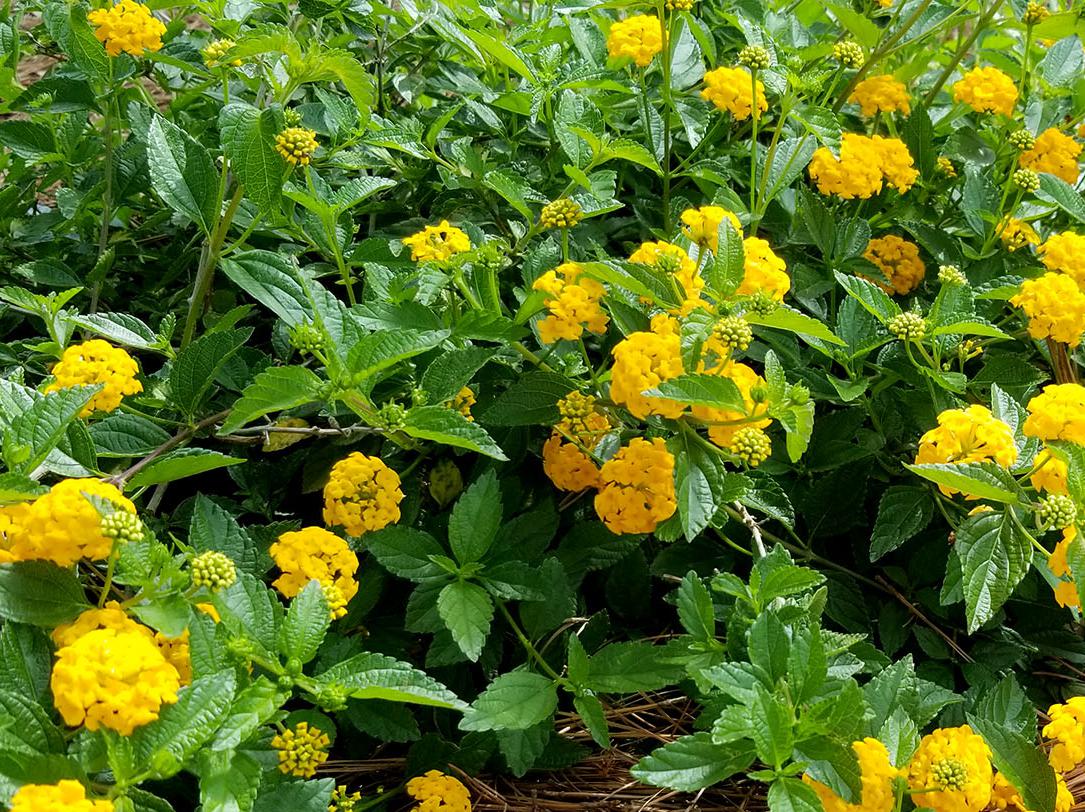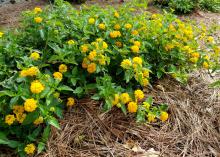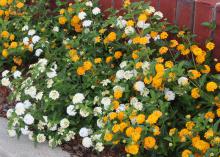Information Possibly Outdated
The information presented on this page was originally released on May 6, 2019. It may not be outdated, but please search our site for more current information. If you plan to quote or reference this information in a publication, please check with the Extension specialist or author before proceeding.
Lantana’s summer bloom show is already underway
One group of landscape plants that is really starting to take off with its summer show is the lantana. These popular landscape plants are available in a dizzying variety of sizes and colors.
I really like lantanas' spreading growth habit. They can act as ground covers and are full of nonstop blooms. In fact, I like to use these plants instead of flowering annuals. Once established, lantanas are reasonably drought tolerant, but during dry conditions like we usually experience in Mississippi summers, they require supplemental irrigation.
Perhaps the lantana I like best is an oldie but goodie. New Gold lantana, a Mississippi Medallion winner in 1996, has outstanding, bright golden-yellow flowers. It’s vigorous and low growing, with a dense, trailing habit. It has the potential of reaching 1 to 2 feet tall with a 3-foot spread.
Two selections closely related to New Gold lantana and with similar growth habits are Butter Cream, which has bright-yellow flowers that transition to creamy white, and Silver Mound, which has pure white flowers.
I’ve grown Butter Cream lantana in the past. The flowering starts out as a bright, golden-yellow and then, as the flowers mature, the edges turn creamy white until the entire flower is white. During the summer, there is a beautiful blend of these sunny flowers on Butter Cream’s low-mounding growth. Silver Mound’s flowers open and remain a snowy white through the season.
In the early spring, cut lantana back hard to about 4 to 6 inches to make room for new growth. Light pruning through the summer helps retain size and tidiness, and it helps stimulate more flowering and a bushier structure.
It is crucial you maintain good nutrition for continued flowering through the summer. Flowering will seem to shut off if the plants get “hungry.” Fertilize once per week with a water-soluble fertilizer to preserve flowering potential.
The only pest of any significance to watch out for is lantana lace bug, which produces leaf stippling on the tops of the leaves and tar-like frass on the undersides. Heavy infestations reduce flowering and even cause the plant to defoliate.
We’ve observed this problem in some of our lantana plantings at Mississippi State University’s Coastal Research and Extension Center in Biloxi. The lantana will leaf out and flower again, but it can cause some concern. Prune the damage back to help stimulate regrowth. It’s interesting that some selections seem more resistant to this pest.
If you confirm you have a lantana lace bug infestation, apply a systemic insecticide to the plant root zone during May and July. Systemic insecticides include the chemicals dinotefuran or imidacloprid. Read labels to find which products include these chemicals. Allow several weeks for the insecticides to work, because they must spread through the plant to be effective.
If you can’t decide whether you want lantanas in your garden and landscape, remember this: You have to have lantanas if you want to attract butterflies and hummingbirds.





